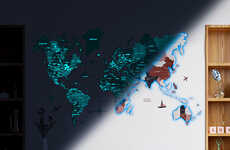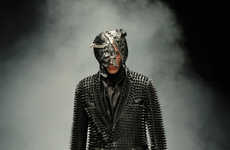
Mark Khachfe Captures World Cities At Night from Space
Itai Buenahora — March 16, 2014 — Tech
Artist Mark Khachfe captured these algorithmic nocturnal cityscape images, wanting to replicate shots from space, in higher quality. Using open source map data and an algorithm, Mark digitally produced these stunning images, printed on Olmec 250 gsm Photo Glossy, that allow us to see what world cities look like from space at night. The overshots appear like a spiderweb of lights, clustered and strung together by the engulfed geographic areas.
Capturing London, Stockholm, Amsterdam, the British Isles, San Francisco, and Paris, these are artistic interpretations that are geographically accurate and visually intriguing. A collection of 50 new cities will be made available, all captured nocturnally, glistening below the wondrous skies of the universe.
The digital prints are available on Mark Khachfe's 'Etsy' shop for about $40 a piece, and are sure to light up your surroundings.
Capturing London, Stockholm, Amsterdam, the British Isles, San Francisco, and Paris, these are artistic interpretations that are geographically accurate and visually intriguing. A collection of 50 new cities will be made available, all captured nocturnally, glistening below the wondrous skies of the universe.
The digital prints are available on Mark Khachfe's 'Etsy' shop for about $40 a piece, and are sure to light up your surroundings.
Trend Themes
1. Algorithmic Nocturnal Cityscape Printing - The use of rendering tools and algorithmic systems to produce highly detailed and artistic nocturnal cityscapes.
2. Open-source Map Data Integration - Developing tools that can integrate open-source map data and other public records with cutting-edge rendering algorithms and printing systems.
3. Geographically Accurate Visualization - Utilizing advanced data mapping technologies to create stunningly accurate visuals of cities, regions, and landscapes with potential applications in urban planning and historic preservation.
Industry Implications
1. Fine Art Printing - Opportunities for printmakers and fine art reproduction companies to expand their offerings by incorporating algorithmic cityscape printing.
2. Geospatial Data Science - Capitalize on the increasing demand for geospatial data by developing sophisticated algorithms to create high-quality nocturnal cityscapes.
3. Urban Planning and Architecture - The use of algorithmic cityscape printing in urban planning, architecture, and GIS applications for better visual communication and decision-making.
4.9
Score
Popularity
Activity
Freshness























